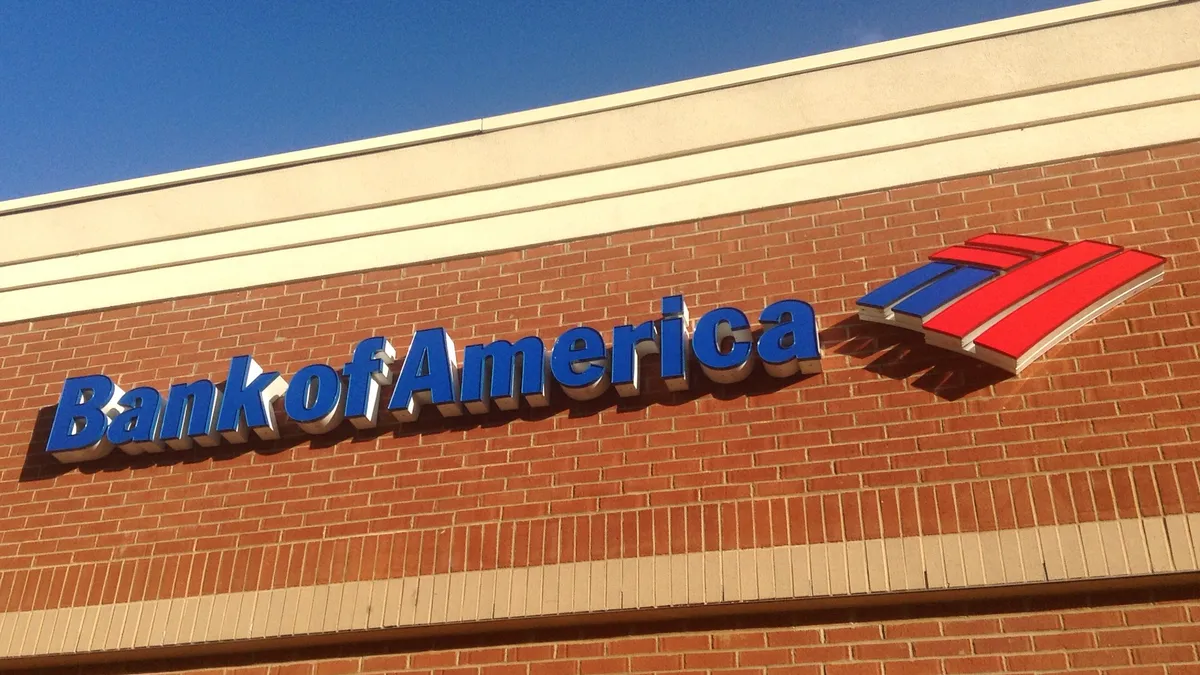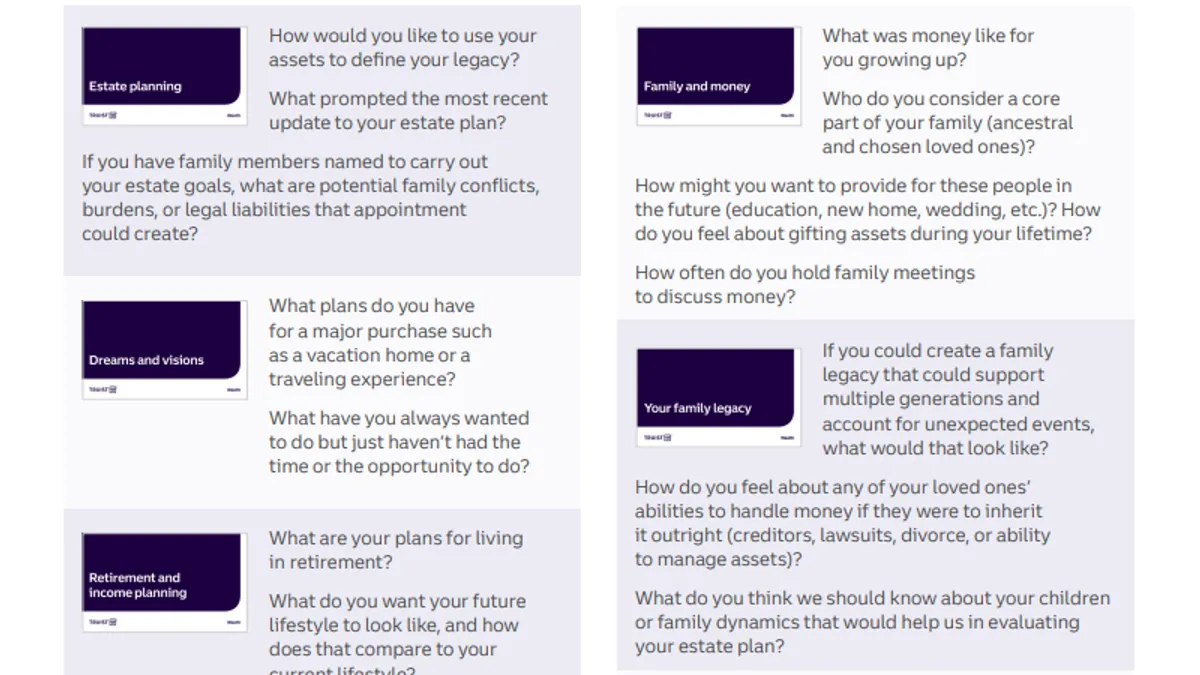Dive Brief:
- Profit at Bank of America fell 16% in the third quarter to $4.9 billion, compared to $5.8 billion a year earlier, the Charlotte, North Carolina-based lender reported Wednesday. This marks the third straight quarter in which the bank’s profit has fallen by more than 15%, though the drop isn't quite as stark as in the second quarter, when profit fell by 52% year over year.
- The bank set aside $1.4 billion for credit losses in the third quarter, a 73% drop from the $5.1 billion it reserved in the previous quarter.
- Revenue dropped 11% to $20.3 billion, driven by lower interest rates and lower consumer fees, which were partly offset by improved trading and investment banking results.
Dive Insight:
In the bank’s second full quarter since the start of the coronavirus pandemic, growth in deposits (21%) and loans (3%) continued. Profit at Bank of America’s consumer bank fell 36%, from $3.3 billion a year earlier. The bank attributed this to lower rates, lower consumer spending and increased requests for customer assistance.
CEO Brian Moynihan said the impact of the economic recovery is already being felt. "We generated nearly $5 billion in earnings this quarter, reflecting the diversity of our business model, our industry-leading market position and digital capabilities, and our adherence to responsible growth," he said in a statement.
The bank’s move to reduce its credit reserves is consistent with actions of other large banks. In the third quarter, both JPMorgan Chase and Citi reduced their credit reserves by 94%. Moynihan said the bank has seen a "full restoration of spending" by customers in the third quarter, compared with the same period last year.
While commercial net charge-offs were flat quarter over quarter, consumer net charge-offs dropped 23%, in part due to deferrals and government stimulus payments. In addition, the bank reported that the COVID-19 impact on consumer repayments behavior is rebounding: At 1.8 million, the number of payment deferrals the bank has processed remains steady compared to the prior quarter. About 100,000 from the second quarter were still in place at the end of September.
The impact of consumer loan losses, however, won’t likely be known until next year, the bank said.
"In consumer, given the lack of significant delinquencies we've seen so far, even on those customers who will come off deferral, and given the fact that net charge-offs don't occur without bankruptcy until 100 days past due, it's just not likely we're going to see consumer net charge-offs will show up until kind of mid-2021," Paul Donofrio, Bank of America’s chief financial officer, said on the bank’s third-quarter earnings call.
The bank processed 343,000 Paycheck Protection Program (PPP) loans so far this year, accounting for $25 billion in funding. Meanwhile, the bank reported adjusted trading revenue of $3.3 billion, up 4% year over year.
The bank touted the digital-centricity of its customer base that continued during the pandemic, with 39.3 million digital banking users, marking a 3% year-over-year increase, with average logins per user up 5% year over year.
While Moynihan struck an optimistic tone for the future, he acknowledged continued uncertainty on the evolution of the coronavirus and its effects on the wider customer base.
"What our data continues to suggest is that we are seeing a return to the fundamentals of a generally sound underlying economy," Moynihan said. "But we won't get there until we fully address the healthcare crisis and its associated effects."
Banks are still evaluating the effects of economic uncertainties that are expected to play out, including the delay in a second stimulus and yet-unknown unemployment trends, analysts said.
"Key will be pace of the recovery as second-wave risks remain," JPMorgan equity research analysts wrote in a recent note to clients.














